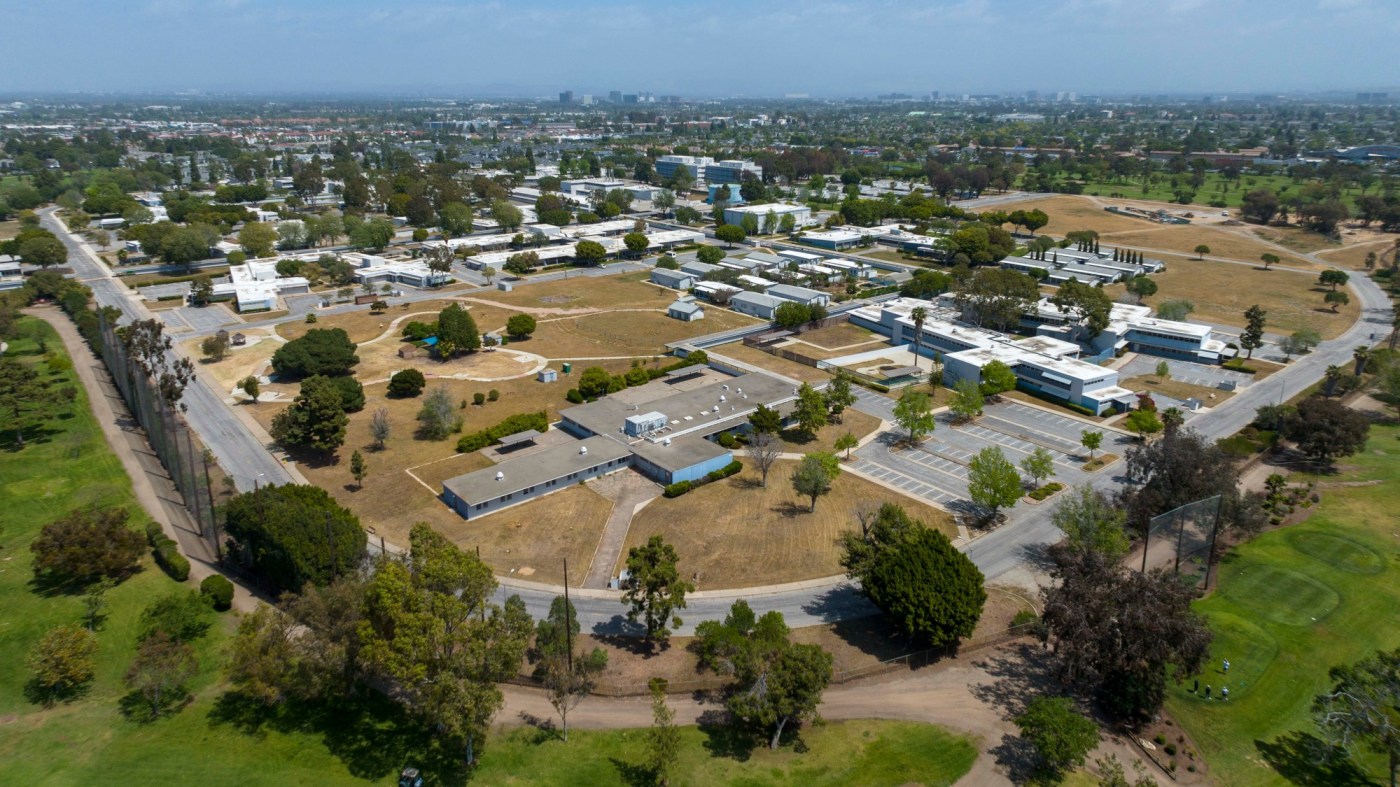A plan to convert a former state hospital in Costa Mesa into a mixed-use community with up to 4,000 homes will be discussed by the Planning Commission on Monday, Aug. 25
The project would redevelop a 100-acre parcel of the Fairview Developmental Center off Harbor Boulevard — a sprawling campus similar in size to South Coast Plaza — into much-needed housing, officials said. The state will turn the remaining 15 acres into a regional emergency operations center.
Fairview Developmental Center opened in 1959 as a state-operated residential care facility for people with developmental or intellectual disabilities, and was closed in 2015.
In 2022, Costa Mesa received $3.5 million in state funding to develop land use scenarios and conduct public outreach for a project to reuse the property. The city’s housing element estimates the Fairview site can accommodate at least 2,300 residential units, 40% of which would be affordable for low- to very-low-income families. The development would help Costa Mesa fulfill the state’s mandate for the city to accomodate at least 11,760 new homes by the end of the decade.
Carrie Tai, the city’s economic and development services director, said there is little property this vast available for development.
Fairview is “unique to Costa Mesa because this is the first opportunity for the city to plan a brand new neighborhood that is going to be a distinct part of the city,” Tai said, describing the site as “an island” — it is surrounded by a golf course.
The city’s role is in developing specific land use plans that envision what this new community offers in an area of Costa Mesa “that’s never functioned as housing,” she said.
“It needs to be a neighborhood with amenities for residents: roadways, bikeways, commercial area, open spaces,” Tai said. “How’s all that going to look?”
Planning Commission and City Council hearings are scheduled through the fall, with a final plan expected to be adopted by December. The state will then select a developer to take on the project.
Tai said the city has requested an extension, as the planning process and environmental impact report are unlikely to be completed until the end of next year.
The city said it could take several more years for the project to break ground, and more than a decade before construction is complete.
The redevelopment of Fairview diverges in several ways from other major proposed mixed-use communities in Costa Mesa, including the 1,050-unit apartment complex Hive Live that’s slated for City Council deliberation in September.
The Fairview Developmental Center site is essentially carved into three sections: 15 acres for the state’s emergency operations center, 20 acres for the Department of Developmental Services to house people with complex needs, and 80 acres for the city to plan the mixed-use village.
Since the project is funded by the state using state-owned land, the city has to comply with the state’s desire to prioritize affordable housing to “the greatest extent feasible” — a goal that may be at odds with what many Costa Mesa residents want.
In Sonoma County, a similar proposal to redevelop state-owned land into a mixed-use neighborhood has stalled for years due to disputes between stakeholders. In January, community groups sued the state for failing to prioritize affordable housing and address the project’s damaging environmental impact on adjacent neighborhoods.
At a Planning Commission meeting in June, Costa Mesa city planners shared three preliminary design concepts with varying degrees of density. The development with the lowest density, called Fairview Promenade, offers 2,300 housing units for roughly 5,744 residents, with 25,000 square feet of commercial space and 14 acres of open space. One access road links the community to Harbor Boulevard.
The city’s “preferred” layout, Fairview Commons, features 4,000 units to accommodate around 10,000 people, with 35,000 square feet of retail and just under 8 acres of open space. Two access roads connect the development to Harbor Boulevard, one of which cuts through the golf course.
The city said the concept is the most “financially feasible” of the three, as prospective developers are likely to build more market-rate units to subsidize the amount of affordable housing mandated by the state.
Residents who opposed the city’s “preferred” plan said it wasn’t shown at the prior workshops and prioritized the interests of the state and the developer over those of the public. They said the amount of housing is too dense for a 100-acre site and the impact of all the new residents on surrounding neighborhoods is worrisome.
“It’s difficult to retrofit Costa Mesa, an old city built on a cow path, to a walkable, bikable, really good livable city when the state is saying, ‘We want nothing but housing here,’” said Cynthia McDonald, assistant treasurer of the citizen advocacy group Costa Mesa First.
McDonald said a livable community should include both housing and recreational spaces and amenities, such as parks, sports fields and community gardens. The city has an open space requirement of 4.26 acres per 1,000 residents — a significantly higher limit than what the “preferred” plan offers, she said.
“You have to build something where people actually want to live,” McDonald said. “Nobody wants to live in tenement-style housing.”
Tai said city planners have a responsibility to assess and present land use scenarios that a master developer might adopt. But that doesn’t mean the City Council will vote for it.
“The city doesn’t have to approve that many units,” she said. “But if we don’t study the likely level of development, we’re not going to adequately plan for it.”
